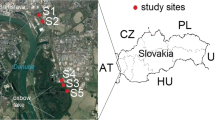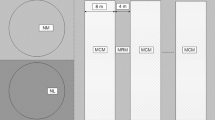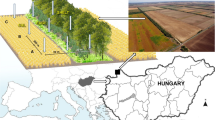Abstract
The Pantanal is one of the faunistic provinces considered as a priority area for invertebrate conservation. However, it is one of the areas in Brazil where the local fauna is less assessed, thus needing more scientific information that could allow political decisions to be made regarding conservation. The continuous pressure for new pasture areas leads to improper habitat occupation and destruction, like fragmentation of forest areas in the region. Such alterations can cause different impacts on the local fauna, including the soil arthropods. The main objective of this work was to compare the morphospecies composition, diversity and density of the soil arthropod fauna between a secondary single species forest (Cambarazal) and a cultivated pasture with exotic and native grass species, using only pitfall traps as sampling method. We found a great variation on the vegetal cover among environments. A higher humidity in the forest soil was observed, as well as a greater compaction of the soil in the cultivated pasture. A total of 3635 individuals were collected, belonging to 214 different morphospecies. 139 morphospecies were collected in the forest (37% exclusive to this environment), while 134 morphospecies were collected in the cultivated pasture (35% exclusive). The diversity was higher in the forest (H′ = 1.634) than in the cultivated pasture (H′ = 1.253). However, considering the area as a whole (forest and pasture) the global diversity was increased. In this paper we discuss about the effects of environmental changes on soil arthropod diversity and propose a hypothetical model for invertebrate management in mosaic ecosystems.
Similar content being viewed by others
References
C.J.R. Alho Z.M.S. Campos H.C. Gonçalves (1987) ArticleTitleEcologia de capivara (Hidrochaeris hidrochaeris, Rodentia) do Pantanal: I – Habitats, densidade e tamanho de grupo Rev. Brasil. Biol. 47 IssueID1/2 87–97
C.M.M. Butakka R.D. Miyazaki (1998) Estudos preliminares da entomofauna aquática associada a Eichhornia azurea (SW) Kunth na Baía Mariana no Pantanal de Barão de Melgaço, Mato Grosso, Brasil Anais do IV Simpósio de Ecossistemas Brasileiros Academia Ciências do Estado de São Paulo Águas de Lindóia, Brasil
D.J. Borror R.E. White (1970) A Field Guide to Insects of North America to Mexico. Peterson Field Guides Houghton Mifflin Company New York, USA
InstitutionalAuthorNameConservation International do Brasil (1999) Ações Prioritárias para Conservação da Biodiversidade do Cerrado e Pantanal Brasília MMA
C.S. Elton (1973) ArticleTitleThe structure of invertebrate populations inside neotropical rain forest J. Anim. Ecol. 42 55–103
R.L. Ferreira M.M.G.S.M. Marques (1998) ArticleTitleA fauna de artrópodes de serrapilheira de áreas de monocultura com Eucalyptus sp. e mata secundária heterogênea Anais da Sociedade Entomológica do Brasil 27 IssueID3 395–403
R.L. Ferreira M. Souza-silva (2001) ArticleTitleBiodiversity under rocks: the role of microhabitat in structuring invertebrate communities in Brazilian outcrops Biodiv. Conserv. 7 IssueID10 1171–1183
T.S. Filgueiras F.S. Wechsler (1992) Aproveitamento e manejo – Pastagens nativas B.F.S. DIAS (Eds) Alternativas de Desenvolvimento dos Cerrados: Manejo e Conservação dos Recursos Naturais Renováveis IBAMA Brasília 96
I.E.G. Garay B.F.S. Dias (2001) Conservação da biodiversidade em ecossistemas tropicais: avanços conceituais e revisão de novas metodologias de avaliação e monitoramento Editoras Vozes Petrópolis, RJ 430
A. Goudie (1994) The human impact on the natural environment EditionNumber4 The MIT Press Cambridge, Massachusets
D.G. Haskell (2000) ArticleTitleEffects of forest roads in macroinvertebrate soil fauna in the southern Appalachian Mountains Conserv. Biol. 14 IssueID1 57–63 Occurrence Handle10.1046/j.1523-1739.2000.99232.x
D.S. Ingham M.J. Samways (1996) ArticleTitleApplication of fragmentation and variegation models to epigaeic invertebrates in South Africa Conserv. Biol. 10 IssueID5 1353–1358 Occurrence Handle10.1046/j.1523-1739.1996.10051353.x
H. Lorenzi (2000) Plantas daninhas do Brasil: terrestres, aquáticas, parasitas e exóticas, 3a ed Nova Odessa SP 608
R.H. MacArthur J.W. MacArthur (1961) ArticleTitleOn birds species diversity Ecology 42 594–598
R.O. Matthew D.L. Dahlsten W.W. Benson (2003) ArticleTitleEcological interactions among ants in the genus Linepithema, their phorid parasitoids, and ant competidores Ecol. Entomol. 28 203–210
M.S. Moretti M.D.C. Goulart M. Callisto (2003) ArticleTitleAvaliação rápida da macrofauna associada a Echhornia azurea (Swartz) Kunth1843 e Pontederia lanceolata Nutt., 1818 (Pontederiaceae) na Baia do Coqueiro, Pantanal de Poconé (MT/Brasil) Rev. Brasil. Zoociências 5 IssueID1 7–21
I.M. Medri J. Lopes (2001) ArticleTitleColeopterofauna em floresta e pastagem no norte do Paraná, Brasil, coletada com armadilha de solo Rev. Brasil. Zool. 18 IssueIDSuppl. 1 125–133
J.C. Meirelles (1996) Pecuáriia bovídea – O desafio da produtividade Folha da EMBRAPA Brasília, Maio/Junho 2
J.C. Moore H.W. Hunt E.T. Elliot (1991) Interactions between soil organisms and herbivores P. Barbosa V. Kirschik C. Jones (Eds) Multithrophic-level Interactions Among Microorganisms, Plants and Insects John Wiley New York 385
E.R. Pianka (1966) ArticleTitleLatitudinal gradients in species diversity: a review of concepts Am. Nat. 100 33–46 Occurrence Handle10.1086/282398
E.R. Pianka (1982) Evolutionary Ecology EditionNumber3 Harper & Row New York 356
Primack R.B. and Rodrigues E. 2001. Biologia da conservação. Londrina, 328pp. E. Rodrigues.
A. Primavesi (1982) O manejo ecológico do solo Livraria Nobel SA 514
A.E. Ramos C.M.M. Rosa (1992) Impactos de processos ecológicos – Impacto das queimadas B.F.S. DIAS (Eds) Alternativas de Desenvolvimento dos Cerrados: Manejo e Conservação dos Recursos Naturais Renováveis 96p IBAMA Brasília 34–38
B.N. Richards (1974) Introduction to the Soil Ecosystem Longman Group Ltd. New York 266
Rizzini C.T. 1997. Tratado de fitogeografia do Brasil: aspectos ecológicos, sociológicos e florísticos. Âmbito Cultural Edições Ltda, 747pp.
G.B. Santos M.I. Marques J. Adis C.R. De Musis (2003) ArticleTitleArtrópodos associados à copa de Attalea phalerata Mart. (Arecaceae), na região do Pantanal de Poconé, Mato Grosso, Brasil Rev. Brasil. Entomol. 47 IssueID2 211–224
T.D. Schowalter T.E. Sabin (1991) ArticleTitleSerrapilheira microarthropod responses to the canopy herbivory, season and decomposition is serrapilheira bags in a regenerating conifer ecosystem in Western Oregon Biol. Fert. Soils 11 93–96 Occurrence Handle10.1007/BF00336370
T.R. Seastedt (1984) ArticleTitleThe role of microarthropods in decomposition and mineralization processes Ann. Rev. Entomol. 29 25–46 Occurrence Handle10.1146/annurev.en.29.010184.000325
L.F. Silva (1996) Solos tropicais: aspectos pedológicos, ecológicos e de manejo Terra Brasilis São Paulo 137
Suguio K. 1973. Introdução à Sedimentologia. ed. Edgard Blucher Ltda. EDUSP, 317pp.
W.J. Sutherland (1996) Ecological Census Techniques: A Handbook Cambridge University Press Cambridge 336
H.L. Vasconcelos (1999) ArticleTitleEffects of forest disturbance on the structure of ground-foraging ant communities in central Amazonia Biodiv. Conserv. 8 409–420
H. Wolda (1981) ArticleTitleSimilarity indices, sample size and diversity Oecologia 50 296–302 Occurrence Handle10.1007/BF00344966
R.E. White (1983) A Field Guide to Beetles of North America. Peterson Field Guides Houghton Mifflin Company New York, USA
J.H. Zar (1996) Biostatistical Analysis EditionNumber3 Prentice-Hall New Jersey 718
Author information
Authors and Affiliations
Corresponding author
Rights and permissions
About this article
Cite this article
Loyola, R.D., Brito, SL. & Ferreira, R.L. Ecosystem Disturbances and Diversity Increase: Implications for Invertebrate Conservation. Biodivers Conserv 15, 25–42 (2006). https://doi.org/10.1007/s10531-004-1870-x
Received:
Accepted:
Issue Date:
DOI: https://doi.org/10.1007/s10531-004-1870-x




